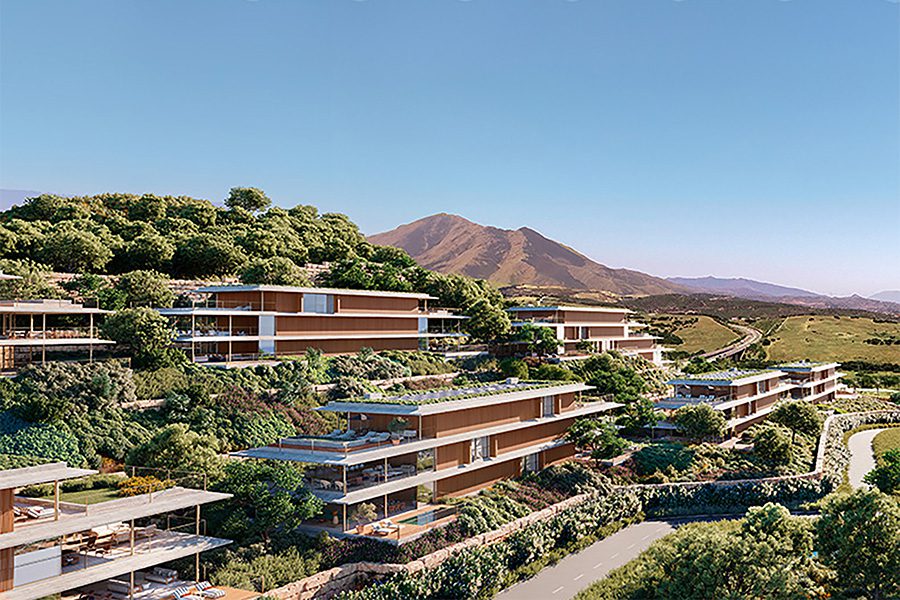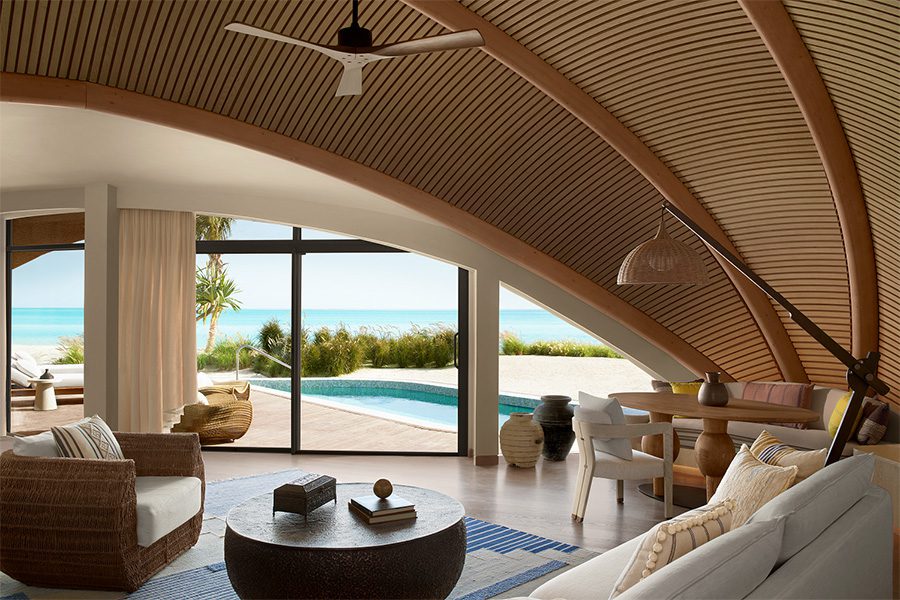As CEO of Marriott International, Anthony Capuano is leading the hospitality giant through a period of record growth, with 2024 marking a banner year for new openings and development deals. His strategic focus on leveraging Marriott’s industry-leading scale and diverse brand portfolio has attracted a new wave of owners and franchisees, particularly in the midscale segment.
Looking ahead to 2025, Capuano remains committed to enhancing guest experiences via branded residences, outdoor hospitality accommodations, and Marriott’s evolving loyalty program.
Here, Capuano talks about how Marriott is responding to the changing demands of modern travelers.
What do you attribute Marriott’s record growth in 2024 to?
Anthony Capuano: Our owners and franchisees, as well as prospective ones, look at the strength of the brand measured by metrics like RevPAR, the power of the revenue engines that are driving top-line revenue into the hotels, the expertise and economies of scale that impact margins, and the strength and reach of the loyalty platform.
When you look at us, we have industry-leading scale, and we have the industry’s largest loyalty platform. We leverage that scale to drive top-line and bottom-line performance for our owners. We continue to try to evolve the loyalty platform to go beyond transactional [purposes] and instead use it as a portal that exposes guests to the breadth of our hotel portfolio and our family of brands as well as the wealth of experiences that membership gives you access to.

The St. Regis Residences Casares, Costa del Sol in Spain, designed by Marcio Kogan, Lázaro Rosa-Violán, and Isabel Duprat
How has this year marked Marriott’s entry into the midscale segment?
AC: If you’re a developer that has often aspired to be a Marriott partner, you’re probably not doing your first deal as a St. Regis. But in terms of the bite-sized nature of the investment, in terms of the relative complexity to construct and operate, entering into the midscale segment in a global way has opened the aperture to bring in new owners and franchises.
What are you excited about in 2025?
AC: If you have hundreds of new hotel openings, that means there are thousands of new career opportunities for our associates around the world [and] hundreds of new destinations our loyal guests and members can explore. If you’re launching new growth platforms, there are myriad ways for our owners and franchisees to continue to grow within the Marriott family.
What keeps you up at night?
AC: I sent a letter earlier this year to all 9,100 of our GMs around the world, and the tone of the letter was that there a lot of smart people sitting in Bethesda, Maryland developing these amazing strategies but none of it matters if you are not inspiring your teams to provide the warm, genuine care to every guest that walks through the door. That has defined this company for nearly a century.
Among the things I worry about going into 2025 is that if a single leader perceives that we’re singularly focused on growth for the sake of growth, and as a result, it dilutes their commitment to taking care of our guests and our associates, then that’s a bad place for us to be.

A one-bedroom villa, crafted by Wimberly Interiors, at Nujuma, a Ritz-Carlton Reserve in Ummahat Islands, Saudi Arabia
How you responding to what travelers want today?
AC: Today’s travelers want authenticity, they want local, they want interesting. They do not want a vanilla box. There was a period in history where people took great comfort in that. I’m sure there are still travelers that feel that way, but the majority of the travelers don’t want to have to look at the plate on the phone to remember what city they’re in. They want art, design, and F&B—all those things that give them a sense of place.
Where do you see growth potential in your family of brands?
AC: We have the benefit of having the industry’s largest luxury portfolio and pipeline. We have seven extraordinary luxury brands, and we see it in the consumer spending data that we get from our partners at American Express and Chase.
Our luxury consumer, that high-income household consumer, continues to prioritize travel and experience. They’re spending disposable income, and we’re well-positioned to take advantage of that.
Similarly, lower-income households continue to prioritize travel and experiences but with a more budget-conscious lens. The fact that we’ve gone so heavily into midscale around the world has opened the opportunity to attract a broader customer base.
Why did you want to get into the outdoor sector with the acquisition of Postcard Cabins and by bringing Trailborn into the Marriott system?
AC: If you look at the portfolio deals we’ve done over the last few years, they tend to fill a gap for us. This falls in that space. If our customers want local, unique, and experiential, then outdoor falls in that sweet spot. We could have launched organically, but even though these are small platforms, they’re well established. They punch way above their weight in terms of consumer awareness. They’re a great launchpad for us to grow, whether it be regionally or globally.
RELATED: Marriott Heads Outdoors with Postcard Cabins and Trailborn

Trailborn Surf & Sound, designed by Post Company, in Wrightsville Beach, North Carolina; photo by Leslie Ryann McKellar
What is the modern traveler looking for today?
AC: Travelers are becoming more and more sophisticated and they recognize even for an individual traveler, they might take 10 trips. One type of hotel does not best fit their needs for every trip. Recognizing that there are different types of accommodations that best meet the needs of certain trip purposes has fueled a lot of our strategy.
We didn’t launch Marriott homes and villas to go head-to-head with Airbnb. We did it because what we heard from our loyal members was for certain types of trips, think multigenerational vacations, a multi-bedroom home with a kitchen and a living room and a backyard, and all those things better fit their needs. If they can’t find that within the Marriott ecosystem, we deliver them into the warm welcoming arms of my friend Brian Chesky. I don’t want to do that—I want to keep them in the Marriott ecosystem.
How is the booming branded residence segment helping set hotels apart in a crowded luxury market?
AC: This is the analogy I like to use. You wake up tomorrow morning and say, ‘I love Miami. I’m going to buy a condo on the beach.’ You get in your car and you drive up and down Collins Boulevard, but there are 100 towers lining the beach and most of them have luxury in the name.
It’s challenging to figure out which one to even look at. Then you happen to see one that has the St. Regis or the Ritz-Carlton logos and that helps you narrow it down. You know what the finish levels are going to be, you have a sense of what the design and service is going to look like. That’s why our branded residential business and those developers command such a price-per-foot premium because people are wrapping themselves in that comfort of knowing what to expect. That’s why people gravitate toward the branded product.

Almare, A Luxury Collection Resort, Isla Mujeres in Mexico, a collaboration with AB Living and Design Positif
What was the reasoning behind the recent company-wide restructuring?
AC: When [former CEO, the late] Arne Sorenson set up the continental structure a little more than a decade ago, we were less than half the size of what we are today. We went from 70-some countries to 144, from 4,100 hotels to 9,100, so it was time to take a look and ask: ‘Are we optimally organized?’
Our continent teams have grown up. They are experts on the markets where we do business. We set out to take advantage of that set of dynamics. Part of the way we did that was to empower the continents teams in a meaningful way to allow real-time localized decision-making and streamline the speed and nimble nature of how we interact with the constituents we serve, our associates, our guests, and our owners and franchisees.
The creation of Diana Plazas-Trowbridge’s role [as chief product lodging officer, U.S. and Canada], which is replicated in each of the continents, allows us to shrink the number of decisions that have to make their way back to Bethesda.
A version of this article originally appeared in HD’s February/March 2025 issue.


